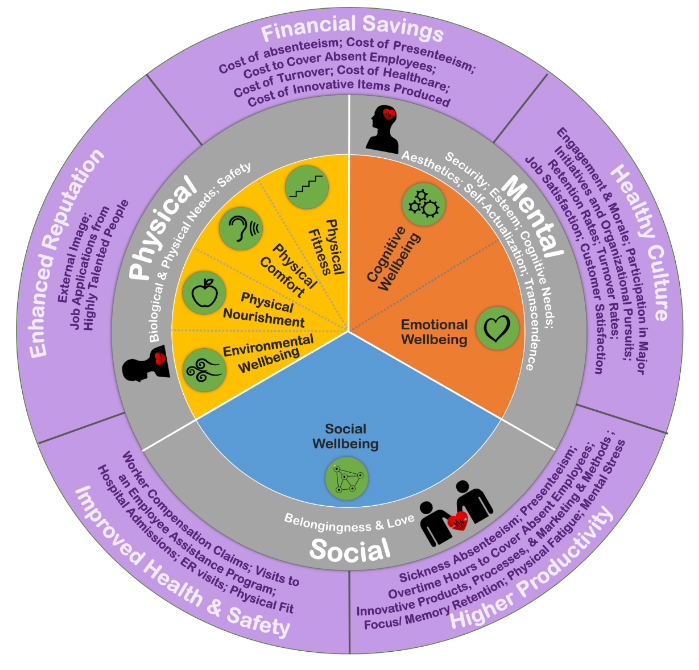In times when stress-related symptoms such as insomnia and concentration disorders are affecting more and more people, HR leaders need to prioritize and implement employee well-being and mental health prevention programs.
For the corporate culture of many companies, the employees well-being is playing an increasingly important role. Employee wellbeing is above all important to motivate and support employees and to contribute to their feeling of well-being in the company and to their enjoyment of their work. This in turn usually has a very positive effect on morale and can ensure that employees stay longer in the company, feel valued and can identify with the company to a certain extent.
“Employee well-being does not mean less performance – providing the ideal framework conditions can lead to higher performance”
Basically, employee wellbeing describes the mental, emotional, physical and economic state of health of employees. Various factors have an influence on this. These can include relationships with colleagues, decisions that are made and also the resources or work equipment available.
7 dimensions of Employee Well-Being
According to the PROWELL Workplace Health and Wellbeing Model (see illustration) there are 7 main components of employee well-being, which can be grouped into three categories:
- Physical
- Mental
- Social domain of well-being.
These three categories derive from Maslow’s Hierarchy of Needs.
According to PROWELL the 7 components are the main factors of a work environment that foster employee well-being.
- Physical well-being:
Eating well, regular exercise and a good sleep pattern ensure a good physical constitution and contribute to enhancing mental health.
- Mental well-being
Taking a break, asking for help or also communicating challenges and problems can help to reduce stress and the risk for burnout.
- Social well-being
Organizing social team activities, encouraging peer-to-peer recognition and arranging one-on-one conversations create a sense of belonging and fosters employee well-being
5 approaches to improve employees‘ health and well-being
- Create the possibility for staff to work more independently and hand over control
Various research has shown that employees with high work demands and low job control suffer from poorer mental health. Therefore, it is important to make changes in the employee’s autonomy and offer trainings, so that employees are able to take on new tasks and more control and autonomy.
- Allow flexibility concerning when and where they work
The COVID-19 pandemic created a sudden need for businesses and their employees to start or increase working from home rather than in the office. The crisis has broken through cultural and technological barriers that prevented remote work in the past, setting in motion a structural shift in where work takes place. Flexible working hours and remote working can improve the mental health of employees.
- Keep your company adequately staffed, so the workload is reasonable
In times of “war for talents” it is not always easy- but high work demands, long hours to work or the pressure to work very hard or fast – can affect the employees well-being. Therefore, it is essential to ensure that the company is adequately staffed and quickly restocked in the event of staff losses.
- Encourage managers to support the employee’s’ personal needs
Studies have shown that employees with supportive and accommodating leaders and managers are less likely to suffer from mental health problems. Training programs for managers to increase the supportive behaviour towards the personal needs of the employees can lead to higher job satisfaction und better job performance.
- Foster social belonging among the employees
A corporate culture that supports and creates relationships among the employees can increase the well-being. Surveys have shown that social belonging among the colleagues decrease psychological distress and poor mental health.
Until today, not many companies have an employee-wellbeing strategy. Inadequate rest, long working hours and that the boundaries between work and leisure time are becoming increasingly blurred due to home-office, can lead to high stress levels and declining employee well-being. Companies that promote a healthy working environment through targeted measures promote employee loyalty and also present themselves as an attractive employer for future employees.
Article written by Bianca Altendorfer, CFR Global Executive Search Austria
Photo source: Freepik

